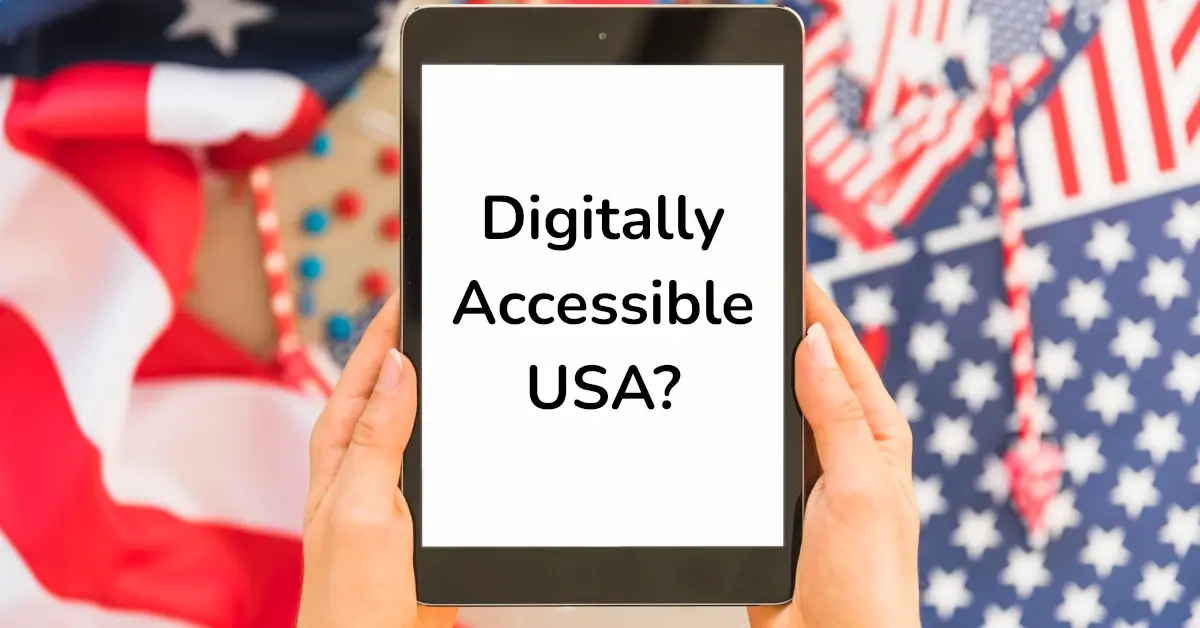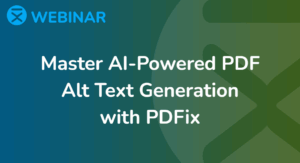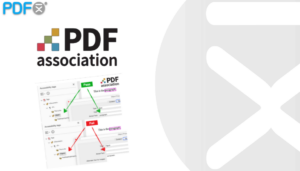A new memorandum, M-24-08, released by the White House on digital accessibility is making waves in the United States, promising a better online experience for all. Thanks to the Office of Management and Budget (OMB), things are getting a major upgrade for 61 million Americans with disabilities. Turns out, document accessibility is a major concern for most federal agencies – almost half of the most popular federal government websites don’t provide full accessibility. That’s why this memo is a game-changer, serving as the ultimate roadmap to bolster digital accessibility and effectively manage Section 508 of the Rehabilitation Act. Let’s unpack the significance this memo brings to the table.
Digitally Accessible USA
Unraveling Section 508
Section 508 is the law that ensures if you’re part of the U.S. federal government or receive federal funds, your digital content must be accessible. For those in the U.S. federal government, Section 508 compliance is a must. The initial adoption of Section 508 faced huge hurdles – unclear guidelines left many unsure about how to make their content truly accessible.
But then came WCAG (Web Content Accessibility Guidelines) – a game-changing set of guidelines designed to boost accessibility. Section 508 has officially incorporated WCAG as the federal standard for accessibility, meaning federal agencies and organizations must follow the WCAG guidelines as mandated by Section 508 law.
Even though the U.S. is one of the major players in digital inclusion, it appears that the journey toward a digitally accessible USA is still a work in progress, plagued by poor policy and process controls. That’s why now, the Biden administration has taken a bold step by setting stringent deadlines for digital inclusion in 2024.
OMB memo M-24-08 isn’t just paperwork – it’s setting the stage with very ambitious deadlines to drive digital accessibility forward. Let’s dive in and explore where to begin!
Key points of OMB:
- Delivering Accessible Digital Experiences: Prior to publishing electronic content, agencies should test it to ensure it meets accessibility requirements.
- Establishing Digital Accessibility Programs and Policies: Agencies must designate a program manager accountable for overseeing digital accessibility processes.
- Procuring Accessible Products and Services: Agencies are encouraged to ensure any new information technology an agency plans to buy will be fully accessible.
- Monitoring and Remediating Problems: Digital accessibility is not a “one and done” initiative. Agencies should regularly scan web content using both automated and manual testing tools.
- Cultivating a Positive Culture of Digital Accessibility: Agencies are encouraged to offer Section 508 and digital accessibility training to employees.
Learn More: Read the policy guidance – OMB Memo 24-08
PDFs: A Hurdle for Section 508 Compliance?
Did you know that PDFs are everywhere on government websites, making up over half of all page visits? And don’t overlook those PDF forms – they’re super popular too! While PDFs gained fame in the ’90s for digitizing paper, their accessibility is a constant challenge. Their easy production brings hurdles, making them a delicate format and an accessibility challenge.
So, whether you’re a federal agency or a business focused on inclusivity, the secret sauce to success is clear – to invest in cutting-edge PDF accessibility technology. Select a solution that your agency can rely on, guaranteeing compliance with standards and ensuring document access for all.
Procurement of Accessible PDF Technology
Navigating all those accessibility laws can be overwhelming, as we all know. With so many regulations and guidelines out there, having technology that supports and covers standards is a must-have, making the hard job easy for you. So, let’s start with our tips: explore the criteria that reliable accessible technology should meet, aligning with the latest regulations.
- Technology tool must conforms to Section 508 standards by meeting WCAG success criteria and PDF Techniques for WCAG.
- It should perform reliable PDF validation tool in conformance to latest standards.
- Technology should support automated document processing and error fixing in combination with manual checks, as automated tools alone cannot assess conformance to accessibility standards.
- State-of-the-art software technology with user-friendly design and workflow eases employee engagement with processes, enhancing company daily operations while reducing long-term operating costs.
Custom PDF Accessibility Solutions: Focus on Your Needs
If your team is looking for a technology partner that can tailor a solution to seamlessly integrate with your business workflow, ensuring compliance with accessibility standards and national regulations, look no further. At PDFix, we offer a range of tools designed to tackle all your document processing needs effortlessly. Whether you need to create fully accessible documents, convert them to other formats, or extract document data for easy distribution and sharing, we have you covered. Get in touch with us today to see how we can help streamline your document management and accessibility efforts.
Start by downloading our free version to explore all the features or contact us for a live demo.



